This is how to remove mould from walls without needing to repaint them, says cleaning expert
Understanding how to remove walls from walls is key to maintaining a safe and healthy home, but how do you do it without damaging the surface? We explain how
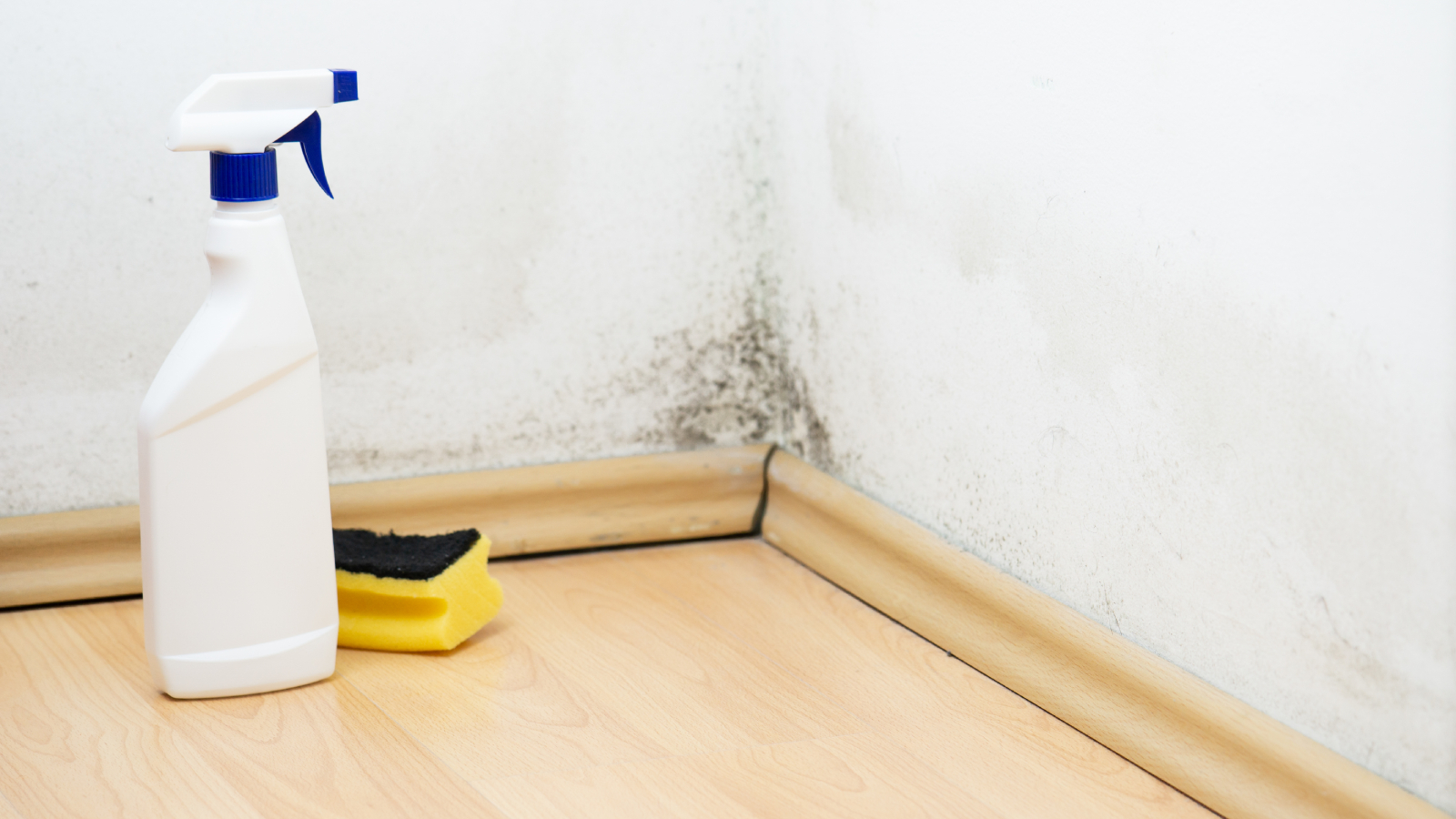
Whether you've spotted the first signs of mould on your walls or find yourself with more than a few black spots to tackle, knowing how to remove mould from walls correctly can help you avoid damaging your walls further.
Plus, having clean walls equals a far healthier home, which is why making sure there's as little mould in your house as possible is always the goal.
But, how can you remove mould from walls without damaging paint for example, and will removing it prevent it from returning? Here we explain how to remove it without having to resort to re-decoration.
Tools for removing mould from walls
Thankfully if you spot mould soon enough, removing it from walls is a relatively easy problem to tackle, and the sooner you get rid of it the better. What's more, removing mould before painting a wall will help to ensure a great finish.
"It’s best to clean mould off your wall as soon as you first start seeing signs of it growing," confirms Georgina Shepherd, cleaning expert at Housekeep.com. "Mould spreads quickly and is far easier to deal with in the early stages."
That said, while a simple DIY mould killer and a bit of elbow grease will get rid of surface mould, if you have underlying issues you will need to deal with those first to ultimately kill it.
"Mould growing on your wall could be a sign of more serious underlying issues, like a leaking pipe inside the wall or beneath the floorboards," warns Georgina. "A professional mould removal service can identify the source and tackle it properly. If you’re renting, raise the issue with your landlord or estate agent."
Bring your dream home to life with expert advice, how to guides and design inspiration. Sign up for our newsletter and get two free tickets to a Homebuilding & Renovating Show near you.
But, if you know the problem is simply a case of surface moisture building up, here are the tools you'll need for tackling the unsightly and unhealthy mould spots.
- Mould removal cleaning solution
- Bucket
- Kitchen cloths
- Kitchen roll
- Rubber gloves
- Goggles
- Mask
- Plastic covers for surrounding furniture and carpet
Or, if you prefer a more natural method for removing mould, "one part vinegar, two parts water solution is also effective," says Georgina, "as vinegar has natural antifungal properties and can kill many types of mould," she adds.
Add baking soda for an extra cleaning boost, but make sure the crystals are fully dissolved so they don't add an overly abrasive finish to the solution.
Shop for mould removal products
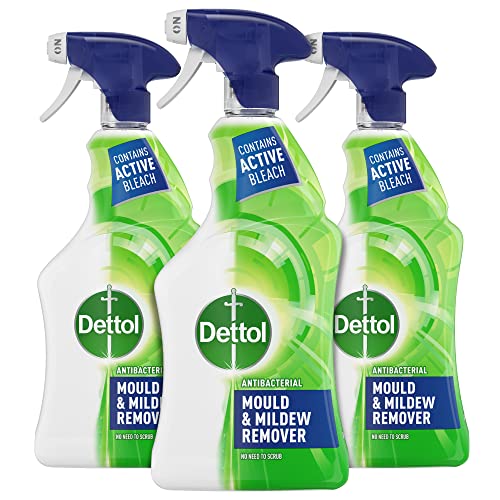
A pack of 3 mould removal cleaning sprays to keep in high moisture areas such as bathrooms and kitchens

A strong pair of durable gloves with soft cotton lining and non slip grip
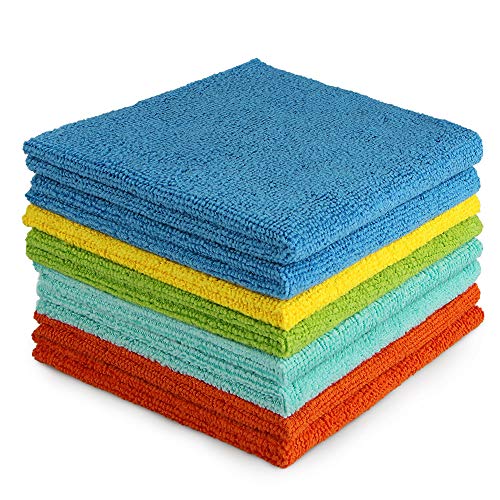
A pack of microfibre cloths for removing mould from walls

Georgina is one of Housekeep.com's cleaning experts, providing knowledgeable advice to clients and staff on how to keep your home hygienically safe and sound.
How to remove mould from walls
Before we get into the details of how to remove mould from walls, it's worth noting that if your walls are painted with a colour it is best to use a solution that doesn't contain bleach. By the very nature of bleach, it will most likely remove colour from the paint and leave an obvious patch on the wall which means re-decorating.
To remove mould from a coloured wall it is a better choice to use warm water, a mild detergent like washing liquid and a non-abrasive kitchen scourer.
Although using diluted or undiluted bleach is best avoided, regardless of your wall surface, suggests Georgina Shepherd..
"It's best to avoid bleach," she confirms, "as bleach-heavy products may make the wall look cleaner temporarily, but it won't kill the mould spores, meaning the mould will likely return. Also avoid harsh cleaners if you can - they won't solve the root problem and can even cause damage to your wall.
"Store-bought mould sprays are usually the most effective," she advises, "just remember to follow the instructions on the label and test on a small patch first to make sure it won’t damage your paint or plaster."
Once you've decided on your cleaning solution of choice, take the following steps to remove mould from walls says Georgina:
- As you don't want mould spores spreading to your carpets and nearby furniture, make sure to lay down dust sheets and cover any furniture
- Before you start cleaning, put on gloves, goggles and a face covering. This helps protect your skin, eyes and lungs from mould spores
- Spray the wall if using a product, or if using a pre-mixed natural solution, gently wipe the affected area without soaking it. Over-saturating the wall can make the mould problem worse and damage plaster
- Avoid aggressive scrubbing, as this can release and spread mould spores further
- Once cleaned, rinse with cold water and pat dry with a clean towel
It's also important to note that even though most sprays will work within 30 minutes, if you are using a natural solution then you may need to leave this for longer for it to take full effect.
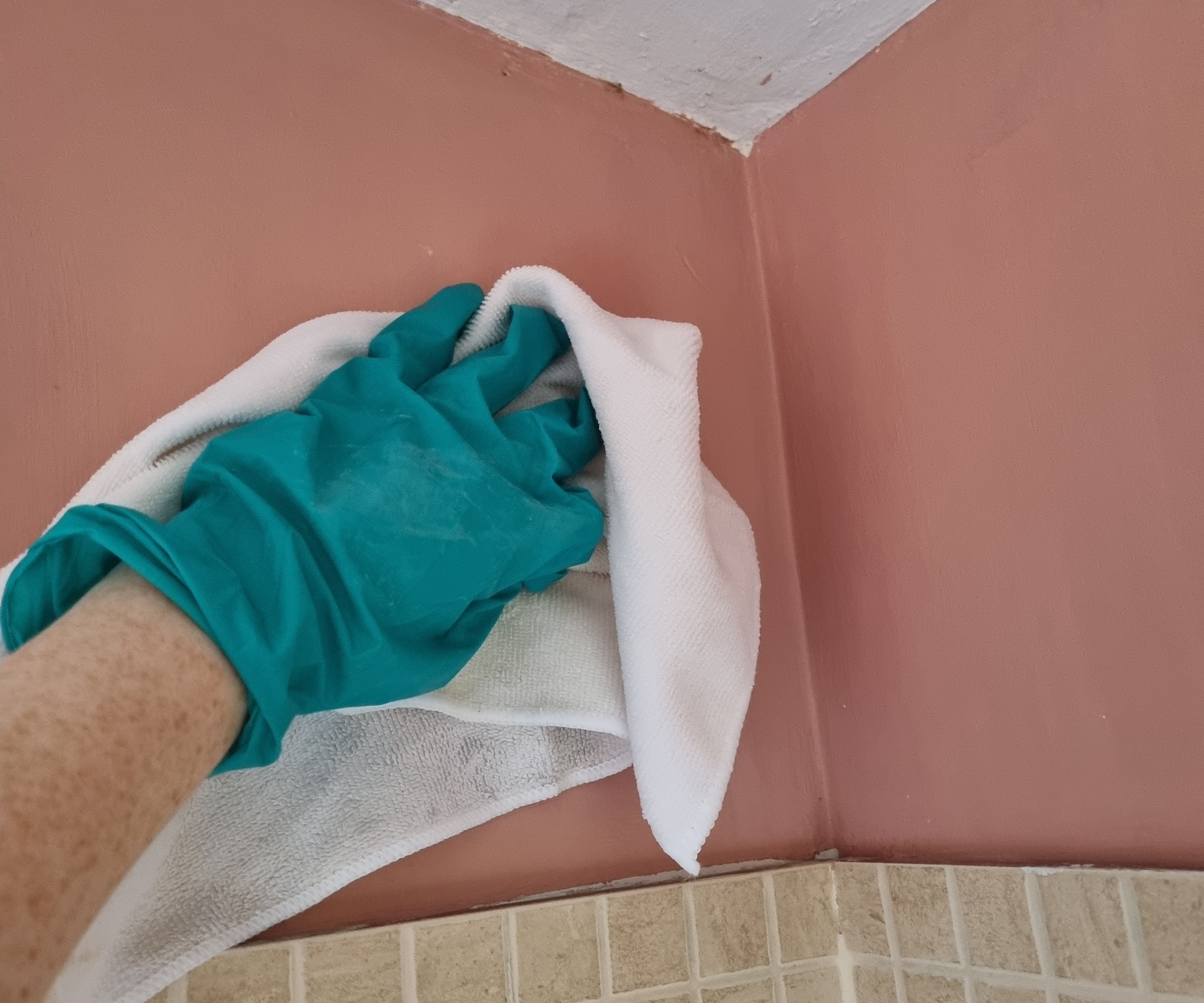
How to prevent it from returning
Although understanding how to remove mould from walls will leave you with a fresh and unblemished surface, are there ways of cleaning it that will prevent it from returning?
In most instances, the answer is no and it also depends on what the cause of the mould is. If condensation is the primary cause – typically in bathrooms and kitchens – then the solution is pretty simple and isn't about cleaning. Instead, good home ventilation is vital. Open windows to let air circulate or switch on an extraction fan. Not sure which once you need? Check out our guide to the best bathroom extractor fans.
Mould may also be the result of damp. Understanding what causes damp in your home is key here. It could be as simple as a leaking rainwater downpipe or blocked gutter that needs cleaning, and fixing this issue will eliminate the problem too.
However, there can be more serious underlying issues which can cause damp too, such as modern impervious cement render applied to solid walls or stone walls; this can hinder the breathability of the wall and consequently trap moisture.
Getting to the root cause and finding out how to treat damp will, in turn, help eliminate mould from coming back. But, there are also some products available such as paint and anti mould additives that can also help your walls and ceilings stay moud free for longer too.
Shop for anti-mould products
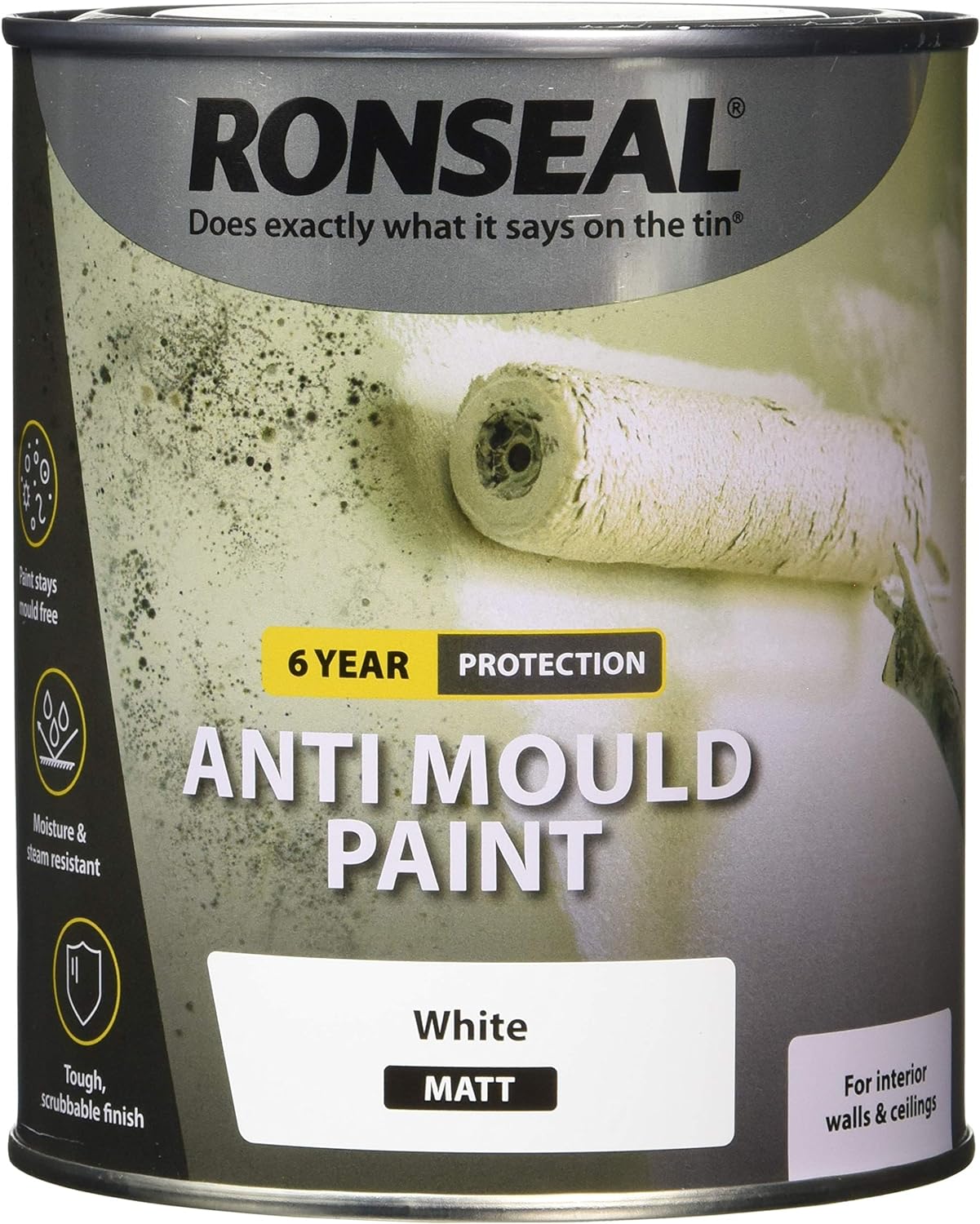
Anti-mould paints are a great way to finish walls in a way that will prevent mould from returning — and come in a range of colours and finishes.
Ronseal anti-mould paint is both moisture and steam resistant and prevents many common types of mould from growing on walls or ceilings for up to six years. What's more, it also has a scrubbable finish.
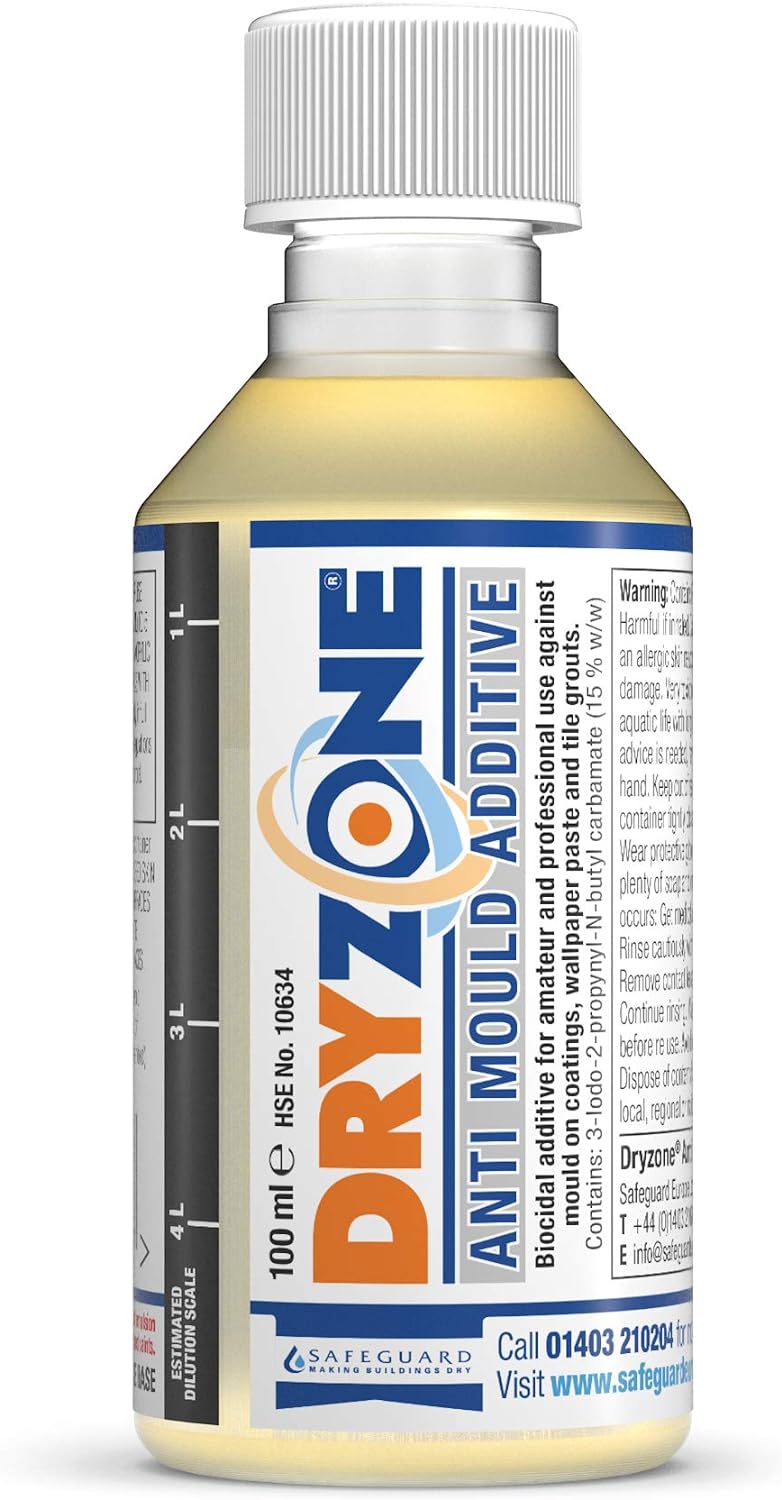
Anti-mould paint additives are a brilliant way to allow you to select any kind of paint for your walls and turn it into one that will resist mould growth going forward.
Dryzone Anti-Mould Additive is a biocidal additive that gives paint, wallpaper paste and even grout mould-resistance for up to five years. Just mix into your paint of choice.
FAQs
How do I remove thick mould from walls?
Surface mould on white walls can be removed using the non-bleach method above. But if the mould has penetrated further into the paint you can use a solution that contains bleach.
Make up a mixture of four parts water and one part bleach. When you have made up the bleach/water mixture add a squeeze or two of washing up liquid. Put into a squeezy spray bottle and apply to the wall. Use a kitchen scourer, use the sponge side first, and wash the wall. Repeat until all mould has been removed. Now dry with kitchen roll. The scourer side of the sponge can be useful for the stubborn areas such as bathroom ceilings. You can also use a mould killing product, such as HG Mould Spray from Amazon, which contains chlorine.
Any kind of water and scrubbing will potentially take a very thin layer of paint off particularly if it's not a paint suitable for moisture heavy areas, so it still might be worth considering painting a ceiling or wall after you have addressed the problem that caused it, and removed the mould.
There are multiple causes for the growth of mould, but they all have a common connection – moisture. Condensation is a regular reason for the growth of mould. This occurs where warm air comes into contact with cold surfaces and is common in bathrooms and on windows. Follow our how to stop window condensation guide which offers tips to keep windows dry and the rest of your room less prone to moisture build up and the subsequent arrival of mould.
Or, if it's mould on other surfaces that's causing you grief, find out how to identify the different types of mould so you can establish the root cause and how best to prevent it, and remove it.
Steve Jenkins is a freelance content creator with over two decades of experience working in digital and print and was previously the DIY content editor for Homebuilding & Renovating.
He is a keen DIYer with over 20 years of experience in transforming and renovating the many homes he has lived in. He specialises in painting and decorating, but has a wide range of skills gleaned from working in the building trade for around 10 years and spending time at night school learning how to plaster and plumb.
He has fitted kitchens, tiled bathrooms and kitchens, laid many floors, built partition walls, plastered walls, plumbed in bathrooms, worked on loft conversions and much more. And when he's not sure how to tackle a DIY project he has a wide network of friends – including plumbers, gas engineers, tilers, carpenters, painters and decorators, electricians and builders – in the trade to call upon.

